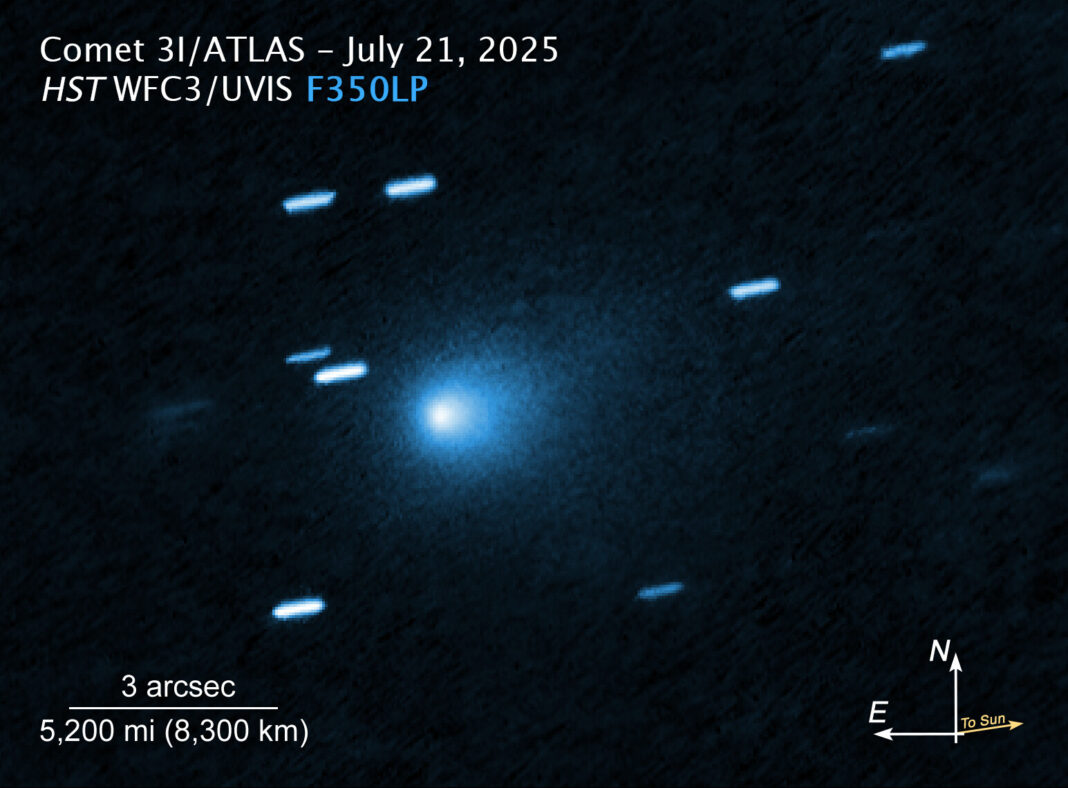Washington, D.C., November 2025 — In a cosmic event that has sparked excitement across the global astronomy community, NASA has confirmed the discovery of Comet 3I/ATLAS, the third known interstellar object to pass through our Solar System. The comet first detected by the Asteroid Terrestrial-impact Last Alert System (ATLAS) telescope in Chile on July 1, 2025 is unlike anything seen in our cosmic neighborhood since the appearances of 1I/ʻOumuamua (2017) and 2I/Borisov (2019). NASA scientists say 3I/ATLAS is now providing a rare glimpse of material formed around another star system.
“This is a once-in-a-decade opportunity to study an object born beyond our Sun,” said Dr. Kelly Fast, NASA’s Planetary Defense Program scientist. “Each interstellar visitor carries chemical fingerprints of its home system — and 3I/ATLAS is no exception.”
An Interstellar Journey
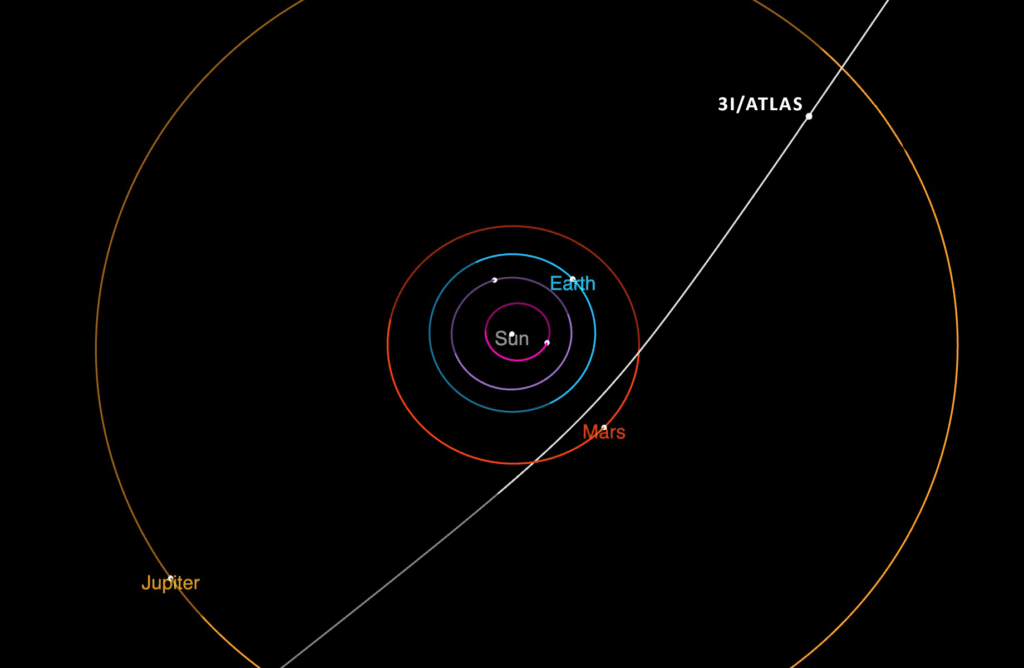
Preliminary orbit calculations show 3I/ATLAS is traveling on a hyperbolic trajectory — a clear signature that it originated from outside the Solar System. Tracing its path backward reveals it entered from the direction of the constellation Hercules at astonishing speeds of nearly 26 km per second relative to the Sun.
The comet will reach its closest point to the Sun (perihelion) around October 30, 2025, at a distance of 1.4 astronomical units (AU) — about 210 million kilometers. It will remain safely distant from Earth, never coming closer than 1.8 AU (roughly 270 million kilometers).
NASA’s interactive orbit animation, available on the 3I/ATLAS multimedia page, illustrates the comet’s passage through the Solar System before it continues its outbound journey into deep space.
Alien Ice and Dust
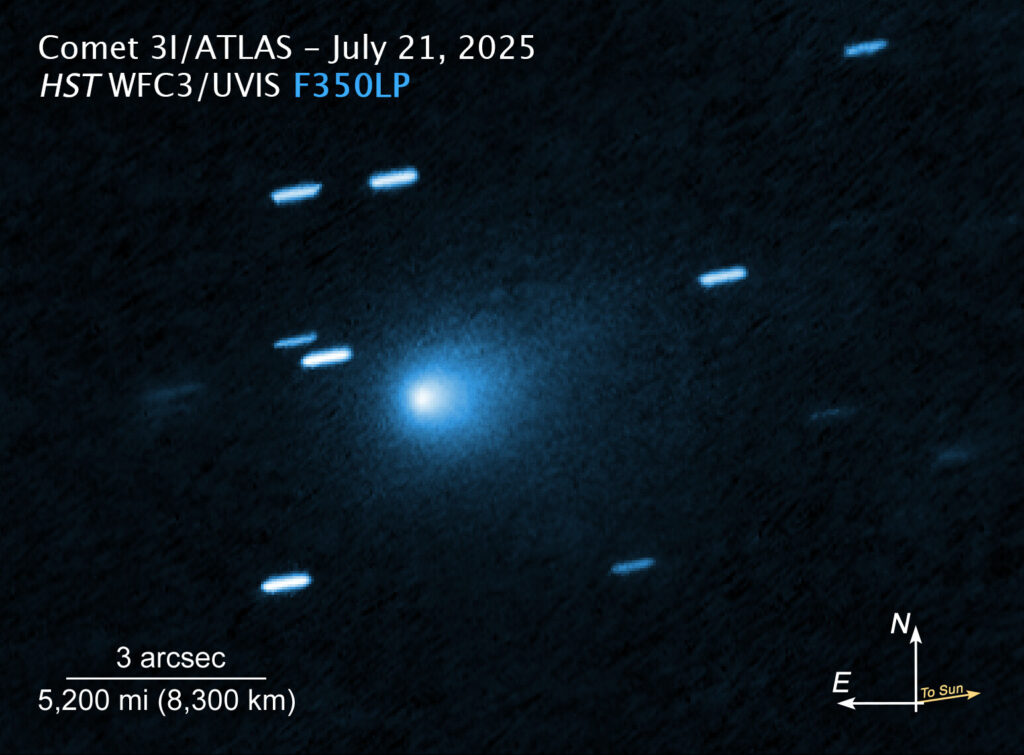
Initial data from the Hubble Space Telescope (HST) and James Webb Space Telescope (JWST) have revealed intriguing differences between 3I/ATLAS and native Solar System comets.
Spectral readings show the comet’s coma is unusually rich in carbon dioxide (CO₂) compared to water vapor — a sign it may have formed in a colder, more distant environment around its original star. Its icy nucleus, though shrouded by dust, is estimated to be between 0.5 and 5 kilometers wide.
Images captured by Hubble display a classic teardrop-shaped tail, suggesting active outgassing as sunlight warms its surface. Researchers believe cosmic rays bombarding the comet during its long interstellar voyage may have chemically altered its outer layers.
Global Observatories on Alert
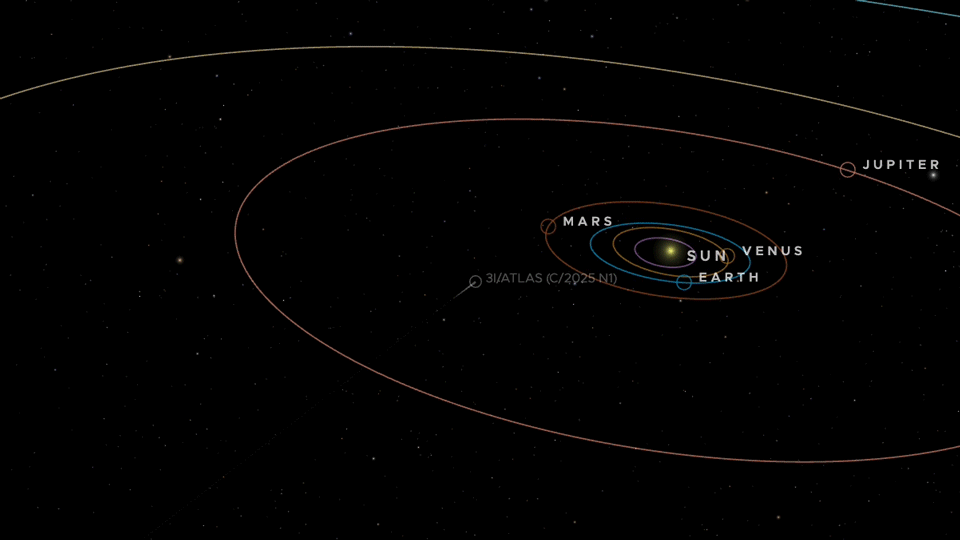
NASA, ESA, and numerous ground-based telescopes have launched an extensive international observing campaign. Assets such as JWST, Hubble, TESS, Swift, and even Mars-based instruments are contributing to multiwavelength studies of 3I/ATLAS.
The coordinated effort aims to measure the comet’s chemical composition, rotation rate, and dust production — data that could help pinpoint the conditions in its home star system.
“3I/ATLAS gives us a chance to test whether the building blocks of planets elsewhere resemble those in our Solar System,” said Dr. Lori Glaze, Director of NASA’s Planetary Science Division. “It’s like receiving a cosmic care package from another world.”
A Rare Visitor, A Universal Story
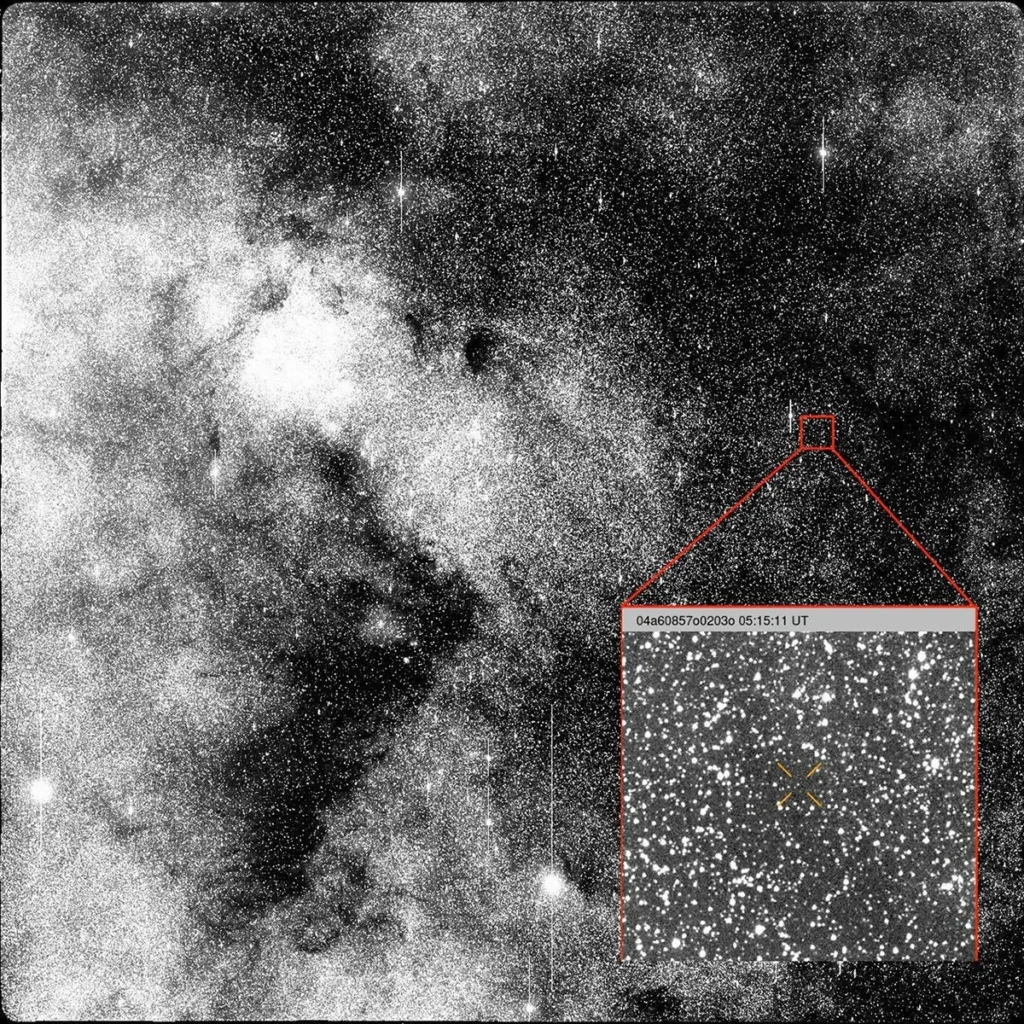
Though 3I/ATLAS poses no threat to Earth, its arrival has captivated scientists and the public alike. It reminds humanity that interstellar space is not empty — it’s a vast, dynamic arena where planetary debris constantly migrates between stars.
As NASA’s high-resolution imagery and orbital simulations continue to roll out, the comet’s story is unfolding in real time on the agency’s official multimedia page.
For astronomers, this marks more than just another discovery — it’s a chance to look beyond the borders of our own Solar System and study a messenger from the stars.
Key Facts about Comet 3I/ATLAS
- Designation: 3I/ATLAS (Interstellar Object)
- Discovered: July 1, 2025, by ATLAS Telescope, Chile
- Closest Approach to Sun: ~October 30, 2025 (1.4 AU)
- Closest Approach to Earth: ~1.8 AU
- Estimated Size: 0.5 – 5 km
- Composition: CO₂-rich coma, with dust and possible water ice
- Trajectory: Hyperbolic, leaving the Solar System post-perihelion

